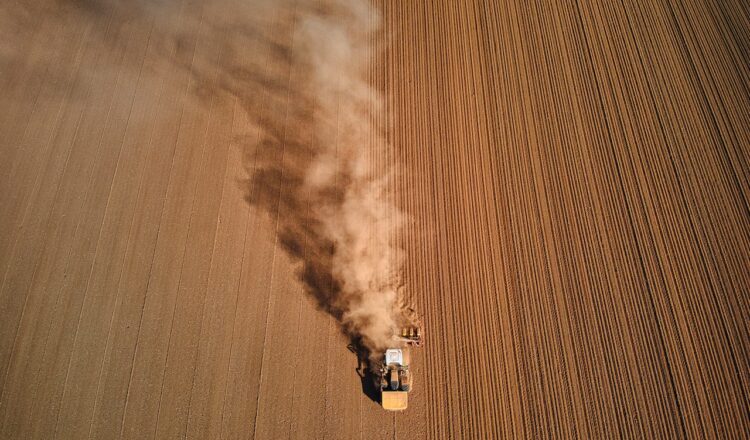Thinking About Rototilling? Think Again
By Steven Jakobi, Master Gardener Volunteer Cornell Cooperative Extension Allegany County
Watching some “how to plant” instructional videos online (for example “how to plant garlic,” or “how to plant asparagus,” etc.), they always start with a perfectly weed-free, smooth and uniformly-textured soil into which they plant their seed, bulb, root, etc. Their soil has been rototilled repeatedly until it is a homogeneous mass of pulverized and unrecognizable particles. Similarly, we are told by some garden experts to rototill in the spring and again in the fall after the growing season is over to “get the garden ready.”
But is rototilling a good idea? The answer is a resounding NO. There are several reasons for this but the most important one is that excessive tilling/disturbance destroys the structure of soil.
Soil is not dirt (my former students can attest to how many times I drummed that into their heads). Soil is a living, breathing entity of complex inorganic and organic materials. Soil has structure; it has definite layers in which hundreds of millions of microscopic and macroscopic organisms find their homes. A handful of soil from the top 8-10 inches may have a million or so tiny worms, called nematodes. These natives are beneficial organisms, not the dreaded creepy-crawly or parasitic worms that may come to mind. In soil, they break down organic matter and their bodies provide food for other creatures. Also present are fungi, insect eggs and larvae, and lots of different bacterial species (again, when we hear the word, “bacterium,” we tend to think of the few dozen disease-causing organisms, rather than the thousands of harmless or beneficial kinds. After all, we are told that bacteria and “germs” must be eliminated from our homes, food, or our bodies, and we spend enormous amounts of time and money to accomplish this), but in soil is different.
In soil, these organisms have definite roles – that is, where they live and what they do for their livelihood. Undisturbed soil is a harmonious place of microbes, animals, plants, air, water, and minerals. It has a definite pulse and rhythm, and an orderly sequence of events occur in it throughout the seasons.
For humans, of course, we want to plant things when and where we want them. To accomplish that, we get rid of some plants called “weeds” and we “prepare” the soil for the commodity we wish to produce. Tilling to produce the correct “tilth” (the degree of desired soil alteration) has been practiced ever since humans settled into agricultural communities. But modern agriculture has not always been kind to soil, and mechanical tilling has done a lot of damage to the structure of even the best natural soils.
Rototilling is one of those destructive practices. I know people who rototill until their plot looks like the picture in one of those instructional online videos. While this may be pleasing to the eye, it destroys the natural structure of the soil, disturbs channels, and pore spaces for air and water distribution, such that the soil becomes prone to compaction, waterlogging and erosion; and actually, favors spreading weed seeds or undesirable plant parts.
In autumn, let’s leave the roots of our crops to hold the soil in place during the winter. We can rake up diseased plant parts and mulch the top layer of soil (wood chips, shredded leaves, etc.) to protect it. Come spring, we can rake and lightly turn over the soil with a trowel or shovel to work in some composted organic matter. We could even experiment with no-till methods to grow our next crops and keep “weeds” to a minimum with proper mulching and companion planting, instead of rototilling. And we’ll have one less motor-driven contraption to buy, maintain, repair, and pollute the air.






